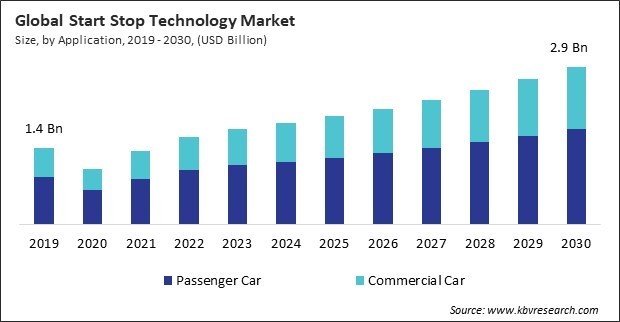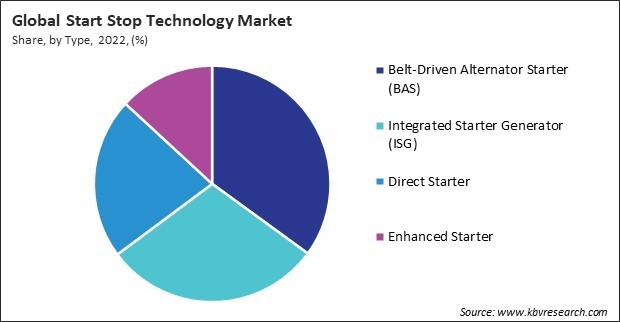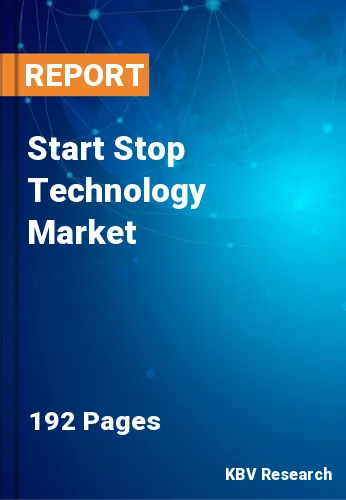“Global Start Stop Technology Market to reach a market value of USD 2.9 Billion by 2030 growing at a CAGR of 7.4%”
The Global Start Stop Technology Market size is expected to reach $2.9 billion by 2030, rising at a market growth of 7.4% CAGR during the forecast period.
Start Stop technology has transitioned from being a feature in high-end or premium vehicles to becoming more commonplace in mainstream and entry-level models across the Asia Pacific. Therefore, the Asia Pacific region captured $485.90 million revenue in the market in 2022. The region substantially contributes to the automotive industry, and increasing demand for vehicles has driven advancements in automotive technologies. Moreover, as the region embraces electric and hybrid vehicles, start stop systems are often integrated into more comprehensive energy management strategies in these advanced powertrains.

Advanced BMS technologies enable real-time monitoring of battery health. This includes tracking factors such as state of charge (SOC), state of health (SOH), and temperature. Optimized battery health monitoring ensures that the battery in a start stop system is in optimal condition, enhancing the overall reliability and longevity of the system. BMS innovations address voltage and current imbalances within battery cells. Thus, because of the innovations in battery management systems, the market is anticipated to increase significantly.
This technology can be integrated into hybrid electric powertrains to optimize efficiency. According to the International Energy Agency, electric car sales are growing exponentially, surpassing 10 million in 2022. The percentage of electric vehicles in total sales has more than tripled in just three years, from 4% in 2020 to 14% in 2022. Hence, rihaveg adoption of electric vehicles has been a pivotal factor in driving the growth of the market.
Introducing new components and technologies in start stop systems may pose challenges in the automotive supply chain. Sourcing specialized components, ensuring availability, and maintaining a consistent supply chain for complex systems can be logistically challenging. Balancing the integration of new technologies without compromising other key vehicle attributes poses a challenge for automakers. Therefore, increased complexity in automotive design is a significant challenge that hampers the growth of market.
By type, the market is categorized into enhanced starter, belt-driven alternator starter (BAS), direct starter, and integrated starter generator (ISG). In 2022, the belt-driven alternator starter (BAS) segment held a 35.0% revenue share in the market. The belt-driven design of the BAS contributes to quieter and smoother engine restarts. This is particularly important for enhancing driver and passenger comfort and reducing the perception of noise and vibration during the stop-start cycles. Reducing noise is key in improving the overall driving experience and acceptance of start stop technology.

Based on application, the market is classified into commercial car and passenger car. The commercial car segment acquired 37.57% revenue share in the market in 2022. Commercial vehicles often operate in urban environments where traffic congestion is common. It is well-suited for optimizing fuel efficiency during frequent stops and starts, a characteristic feature of urban driving. The versatility of these systems allows fleet operators to integrate the technology into different segments of their commercial vehicle fleets, providing consistent benefits across the entire operation.
Free Valuable Insights: Global Start Stop Technology Market size to reach USD 2.9 Billion by 2030
Region-wise, the market is analysed across North America, Europe, Asia Pacific, and LAMEA. In 2022, the Europe region led the market by generating 34.75% revenue share. Growing environmental concerns and consumer awareness have increased demand for eco-friendly vehicles, prompting automakers to integrate fuel-efficient technologies in Europe. Increased consumer acceptance and demand for fuel-efficient and environmentally friendly vehicles have driven automakers to incorporate start stop technology into a wider range of European models.
| Report Attribute | Details |
|---|---|
| Market size value in 2022 | USD 1.6 Billion |
| Market size forecast in 2030 | USD 2.9 Billion |
| Base Year | 2022 |
| Historical Period | 2019 to 2021 |
| Forecast Period | 2023 to 2030 |
| Revenue Growth Rate | CAGR of 7.4% from 2023 to 2030 |
| Number of Pages | 192 |
| Number of Tables | 260 |
| Report coverage | Market Trends, Revenue Estimation and Forecast, Segmentation Analysis, Regional and Country Breakdown, Porter’s 5 Forces Analysis, Company Profiling, Companies Strategic Developments, SWOT Analysis, Winning Imperatives |
| Segments covered | Type, Application, Region |
| Country scope |
|
| Companies Included | Continental AG, Robert Bosch GmbH, BorgWarner Inc, Denso Corporation, Johnson Controls International PLC, Valeo SA, Hitachi, Ltd. (Hitachi Astemo, Ltd.), Mitsubishi Electric Corporation, Aptiv PLC, Aisin Corporation (Toyota Motor Corporation) |
By Application
By Type
By Geography
This Market size is expected to reach $2.9 billion by 2030.
Increasing urbanization and traffic congestion are driving the Market in coming years, however, Cost implications for entry-level vehicles restraints the growth of the Market.
Continental AG, Robert Bosch GmbH, BorgWarner Inc, Denso Corporation, Johnson Controls International PLC, Valeo SA, Hitachi, Ltd. (Hitachi Astemo, Ltd.), Mitsubishi Electric Corporation, Aptiv PLC, Aisin Corporation (Toyota Motor Corporation)
The expected CAGR of this Market is 7.4% from 2023 to 2030.
The Passenger Car segment is leading the Market by Application in 2022; there by, achieving a market value of $1.8 Billion by 2030.
The Europe region dominated the Market by Region in 2022, and would continue to be a dominant market till 2030; there by, achieving a market value of $956.9 Million by 2030.
Our team of dedicated experts can provide you with attractive expansion opportunities for your business.

 Drivers
Drivers
 Restraints
Restraints
 Opportunities
Opportunities
 Challenges
Challenges
